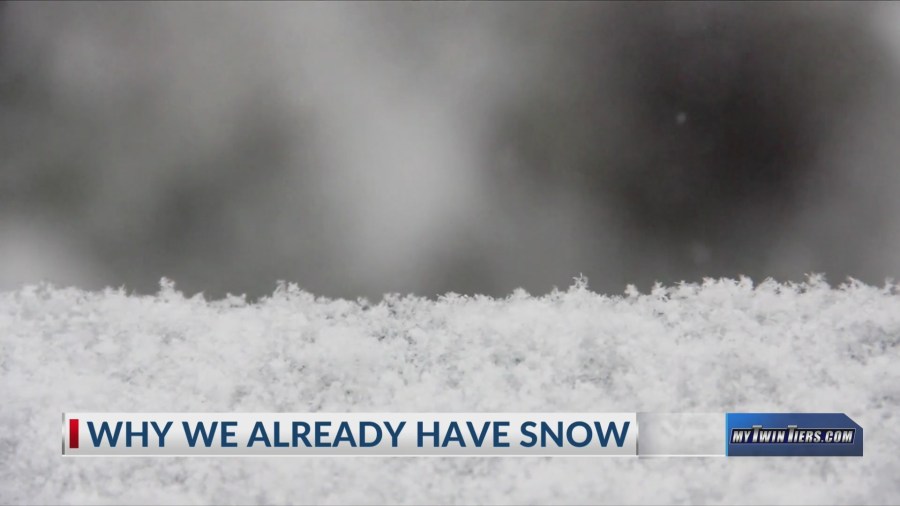In Elmira, New York, recent weather patterns have brought flurries to certain regions in the Twin Tiers, sparking conversations about whether snow in early November is typical. This change in weather comes after a low-pressure system moved into the area on Sunday, bringing with it a mix of rain and wind that originated from Canada. The temperatures experienced a significant drop, plummeting from the mid-sixties over the weekend to the lower fifties by Monday. Additionally, the past few nights have seen temperatures fall into the thirties, marking a notable chill in the air, though these lows are not far off from the seasonal norm, which stands at thirty-nine degrees.
The flurries observed were minor, with no measurable snowfall recorded in the area thus far. However, historical data from the National Weather Service indicates that early snowfall has been recorded in the past. Specifically, Elmira experienced its latest recorded first snowfall on October 19, 1972, while neighboring areas such as Corning and Ithaca also saw significant early snow on October 16, 2009. This historical perspective shows that while the recent flurries may seem unusual, they are not entirely out of character for the region, as the climate in the Twin Tiers has been known to deliver early snow in various years.
Comparing recent temperatures to past records, the fluctuations experienced this autumn echo patterns seen in previous years, where the onset of cold weather can shift dramatically. For instance, in some years, snowfall has occurred as early as mid-October, impacting local events and outdoor activities. Residents and meteorologists alike keep a close eye on these patterns, both for their potential effects on winter activities, such as skiing, and their broader implications on seasonal weather trends.
In the face of these changes, Elmira continues to proceed with its scheduled autumn activities, including the return of the “Trick or Treat at Dunn Field” event, which is set to celebrate its second year. Community events like this not only bring families together but also create a sense of normalcy and continuity amidst an evolving climate. As temperatures drop, such events may become even more popular, allowing residents to engage in seasonal traditions while they adapt to the chilly weather.
Community engagement in local events is crucial, particularly as temperatures fluctuate and weather conditions change. Furthermore, the upcoming “Park in the Park” stargazing event in Erin presents an opportunity for residents to connect with nature and learn about the stars, even as the weather turns cooler. It highlights the dual nature of early snowfall – while it may complicate some outdoor activities, it can also create new opportunities for appreciation and exploration of the natural beauty of the region.
Looking forward, the trend of colder weather may continue as winter approaches, with the potential for more significant snowfall in the coming weeks. Historical data offers useful insights into what residents might expect, suggesting that preparedness for winter conditions will be key. The relationship between community events, changing weather, and local history underscores the dynamic nature of the Twin Tiers, pointing to a future where residents must continuously adapt in navigating their seasonal traditions amid shifting climate patterns.

